|
⇐ Previous Article — Table of Contents — Next Article ⇒
New Energy Times home page
13. Report on 15th International Conference on Condensed Matter Nuclear Science
By Akira Kitamura and Akito Takahashi
Understanding of condensed matter nuclear phenomena is deepening, according to the research presented at the field’s annual conference in October.
The 150 participants at the 15th International Conference on Condensed Matter Nuclear Science (ICCF15) in Rome on Oct. 5-9, 2009, learned that the experimental evidence on anomalous heat, nuclear emissions and transmutation is accumulating systematically in many laboratories although progress remains chaotic in some experimental areas.
ICCF15 was hosted by Italian National Agency for New Technologies, Energy and Sustainable Economic Development (ENEA), which is a central institute for high-temperature nuclear fusion research in Italy. In the field of condensed matter nuclear science, ENEA has one of the most active research groups in the world. The group is headed by Vittorio Violante, who was the chairman of this conference.
The conference was sponsored by Energetics Technologies Co., of Israel, and co-chaired by Shaul Lesin, the general manager and co-founder of Energetics Technologies.
The registered participants included 56 from Italy, 38 from the United States, 12 from Japan, 4 from Russia, 4 from China, 4 from Israel, 3 from France, 2 from Germany and one each from India, Romania, Ukraine, and Norway.
The conference was held under the aegis of three authoritative academic societies and institutions: the Italian Chemical Society (SCI), the Italian Physical Society (SIP) and the National Research Council in Italy (CNR).
It was an epoch-making meeting because CMNS has been recognized in the category of pseudoscience by mainstream science. We have to focus on this positive change, hoping that this tendency will grow toward a wider public acceptance of CMNS.
The conference began with three speakers: Luigi Campanella, president of SCI; Enzo De Sanctis, vice president of SIP; and Renzo Tomellini, head of the European Commission’s nanotechnology unit.
Most of the scientific presentations in the first day pertained to the results of excess-heat data in heavy-water palladium cathode electrolysis experiments and their theoretical interpretations. The program seemed to be arranged to justify the original Fleischmann-Pons experiment.
Robert Duncan, vice president of the University of Missouri, began the scientific presentations with a talk on his visit to Energetics Technologies in Omer, Israel. Duncan discussed the company’s demonstration experiments, which convinced him of anomalous excess-heat evolution, as seen on TV in the CBS "60 minutes” show on April 19, 2009.
The show, which reported positive aspects of CMNS, has become known worldwide. Duncan reviewed the achievements of Energetics Technologies (heat evolution, material characterization and helium analysis), including the collaborative experiments by the Energetics Technologies, SRI International and ENEA consortium.
Duncan described the Arata-type gas phase experiments (D2/H2 absorption of Pd nano-powders simultaneously run) by the Kobe group (Kobe University and Technova Inc.), which were published in Physics Letters A [1]. He concluded that the excess-heat evolution is a real phenomenon, and he said that the gas phase absorption method and SuperWave™ electrolysis are promising. He said that clarification of the underlying physics or the theoretical explanation is greatly needed.
Michael McKubre, of SRI International, gave his perspective on the state of the science, emphasizing the three conditions required for excess-heat evolution: D/Pd > 0.83, current density > 50 - 400 mA/cm2, and proportionality to deuterium flux. McKubre reported the best results of his prior experiments, in which the output power reached one kW/cc-Pd transiently, and 150 W/cc-Pd on average lasted for more than one month. This is more than three times larger than the input power and gives an integrated energy of 100 MJ.
McKubre said there is no doubt of the existence of the phenomenon. He said it is reasonable to assume a nuclear process as the origin. He also encouraged the search for possible nuclear ash, including the most possible candidate, helium-4 with 24-MeV per 4He particle.
The conference included a series of presentations on material characterization. Graham Hubler, of the U.S. Naval Research Laboratory, gave a presentation on X-ray diffraction analysis to measure a D/Pd ratio determination by specific resistivity.
David Knies, also of the U.S. Naval Research Laboratory, discussed a low-cost thermal analysis system using thermoelectric modules. Violante discussed material research at ENEA, and Arik El-Boher discussed a verification of preciseness of thermal measurements at Energetics Technologies, where he is deputy general manager.
El-Boher presented a new result of an excess-power experiment reaching 14W and showed that there is no possibility of underestimation of the input power of the SuperWave™ because of possible high-frequency spikes.
McKubre, Violante and NRL researchers told Takahashi that they succeeded in demonstrating the validity of the Fleischmann-Pons experiment by this series of presentations.
Peter Hagelstein, reporting on research he did with Dennis Letts and Dennis Cravens, discussed a result of excess-heat production by a dual laser beam stimulation in heavy-water electrolysis with a Pd cathode. The excess heat was recorded at the beat frequency of 5-20 THz with three resonance-like peaks at 8.3, 15.3 and 20.4 THz, and reached 200 mW.
Melvin Miles, reporting on research he did with Martin Fleischmann, presented a new "ICARUS-type" calorimeter based on a design updated from one he used many years ago in the New Hydrogen Energy project at the Institute of Applied Energy in Japan.
Wu-Shou Zhang, of the Chinese Academy of Science, reported on reproducibility of excess-heat production in a D2O+LiSO4 electrolysis experiment performed with John Dash, professor emeritus of physics at Portland State University, in Oregon.
The first theory session had presentations on three well-known theories: Peter Hagelstein’s phonon exchange model; Yeong Kim’s Bose-Einstein condensation model; and Konrad Czerski’s 3D-fusion model (similar to Takahashi 1989 [2]). Takahashi’s oral presentation listed in this session was an interpretation of experimental results by the Kobe group on anomalously high evolution of heat associated with D(H) absorption of Pd nano-powders. The detailed description of the experiment was made in another presentation by Yu Sasaki.
An awards ceremony the first evening highlighted the conference reception, hosted by Energetics Technologies at Castel Sant’Angelo, near Vatican City.
At the ceremony, Martin Fleischmann received the Minoru Toyoda Gold Medal, newly established by the International Society for Condensed Matter Nuclear Science, in memory of Minoru Toyoda. Takahashi, the former president of ISCMNS, explained the background of the Minoru Toyoda medal and Toyoda’s great contribution in support of CMNS. The medal is discussed further on the ISCMNS Web site.
On the second day of the conference, the first presentation was by Akira Kitamura of the Kobe group. Kitamura discussed the search for nuclear reaction products in gas phase experiments. He reviewed the modified Iwamura-type transmutation experiments, which gave positive data showing nuclear transmutation from Sr to Mo, although the PIXE signals were not strong enough to allow a definite conclusion.
Kitamura also mentioned measurements of possible charged particles emitted during deuterium gas absorption of nano-particles of PdZrO2 composite. Although some runs show apparently positive spectra, possible electrical noise and/or contamination of 241Am used for calibration of the detector are being considered.
Dmitriy Afonichev, of the Institute for Metals Superplasticity Problems, of the Russian Academy of Sciences, reported on deuterium glow discharge experiments using a titanium compound electrode run in a cyclic operation mode, four hours on and four hours off. Afonichev said that more than 1019 atoms of tritium were detected with no accompanying 4He.
Yasuhiro Iwamura, of Mitsubishi Heavy Industries Ltd., presented follow-up experiments on transmutation in multilayer Pd/CaO/Pd complexes under deuterium permeation: a hydrogen distribution analysis by H(15N,alpha-gamma) reaction to find that the alpha->beta phase transition occurs locally and inhomogeneously; and an analysis of Pr distribution by XRF using SOR-X rays at Spring-8.
Kenneth Grabowski, of the U.S. Naval Research Laboratory, reported a replication attempt of MHI-type nuclear transformation experiments. Grabowski said that the attempt failed to confirm the transformation Cs->Pr in the NRL laboratory using samples manufactured by Mitsubishi Heavy Industries.
David Kidwell, also of the Naval Research Laboratory, gave a presentation concluding that praseodymium detected in the experiments performed in the Mitsubishi Heavy Industries laboratory is the result of a contaminant from a reagent, possibly deposited by a person who longer works at Mitsubishi.
Kidwell explained that, after the Naval Research Laboratory team failed in its own replication attempt, he (Kidwell) went to Mitsubishi and performed a smear survey of the desk in the laboratory. Kidwell brought the tissue smears back to NRL to perform a compositional analysis, from which he said he found evidence of Pr contamination from the MHI smears. Kidwell said that the praseodymium detected after deuterium permeation originated from the reagent placed on the desktop.
Iwamura was given a brief opportunity for rebuttal (see article "NRL 2009—The LENR Null Results Laboratory, Again" in this report) and his counterarguments refuted Kidwell’s claim. For example, he said, if MHI's observed Pr was the result of contaminant on the desk, Pr should have been detected also on the blank/virgin samples and/or those used in H permeation runs, which they were not. Thus, Iwamura’s facts directly contradict Kidwell's claim, and most of the audience seemed unsupportive of Kidwell’s point of view.
Yoshiaki Arata, professor emeritus at Osaka University in Japan, presented experimental results on D absorption by PdNiZrO2 nano-powder composites using a “new reactor” with multiple reaction cells arranged in parallel. In the first phase of D absorption, the PdNiZrO2 powder showed larger heat evolution and an amount of residual 4He several times larger than the amounts from the PdZrO2 powder.
The report by Francesco Celani, of Italy’s National Institute for Nuclear Physics, was on extended experiments using the 50-µm-diameter Pd wire with nano-size modification of the surface. High-density excess heat of 150 W/g-Pd was obtained when a pulsed current was conducted through the wire maintained at a temperature of 500°C in D2 gas at 2-8 atm.
The Tsinghua University group headed by physics professor Xing Zhong Li has been performing heat evolution experiments using thin Pd films with a multilayer of TiC/Pd on the surface. Li is trying to make a theoretical interpretation based on a resonant interaction model of the deuterium wave function with the multilayer structure.
Kidwell made another presentation, on experiments using zeolites as the sample, containing 1-nm-diameter Pd (5%) SiO2 nano-compounds. In an operational mode of D/H alternating charge-and-discharge cycle, the heat evolution becomes maximum during the D absorption phase. He ascribes this phenomenon to the chemical reaction producing D2O/H2O, in spite of the apparent discrepancy that the isotope effect appears to be too large.
During the second evening of the conference, a hundred participants attended a special concert at Basilica di San Bartolomeo all’Isola that included Mozart’s Serenade No.10 “Gran Partita.”
On the third day of the conference, Tatsumi Hioki, of Toyota Central Research and Development Laboratories, presented interesting results of D absorption experiments using mixed powders of (2~5)-nm-diameter Pd nano-particles and Al2O3 particles. The researchers observed a very large D/Pd ratio approaching 2.7, of which 2.0 should be, Hioki said, responsible for reduction of PdO to make D2O.
Hioki’s group observed a slight increase in the input-output temperature difference corresponding to the output power of several tens of milliwatts, not only in the runs using the PdAl2O3 powders but also in the runs using commercially available (10~20)-nm-diameter Pd fine particles. The group does not, however, claim evolution of excess heat because of the small signal and lack of reference data for H absorption.
Yu Sasaki, of Kobe University in Japan, explained details of the Kobe group’s experiments using PdZrO2 nano-powders, which corresponds to the introductory part of the presentation, which Takahashi gave the first day. One person asked whether the large heat evolution in the first phase is separated from the energy because of reduction of PdO followed by formation of D2O. Kitamura explained that the absorption energies of 2.3 eV/D and 1.8 eV/H are almost three times greater than the energy for PdO reduction followed by water formation, 0.7(0.8)eV/H(D).
Other interesting presentations included the following: Andrei Lipson, a physicist who was at the Institute of Physical Chemistry and Electrochemistry, of the Russian Academy of Sciences, covered detection of 2–20 MeV alpha particles with a CR-39 nuclear track detector; Yu Toriyabe, in the Graduate School of Engineering at Hokkaido University in Japan, discussed apparent D+D reactions enhanced in Li acoustic cavitation; Jacques Dufour, of the Conservatoir National des Arts et Metiers in France, focused on energy dependence of the contribution of Yukawa-type potential to D+D reaction enhancement; and Norman Cook, of Kansai University in Japan, presented a nuclear lattice model.
Andrew Meulenberg and Krit Prasad Sinha, at the Indian Institute of Science in Banagalore, India, made a claim for strong reduction of the Coulomb barrier because of tightly bound and energetic electron pairs which become coupled closely with nucleons.
Among the many other presentations were some on material development and/or analyses which are very important but somewhat irrelevant from a CMNS point of view. Some poster presentations seemed to have very important and interesting substance, but unfortunately, little care was taken to assure enough and suitable time for discussion.
On Wednesday afternoon, participants visited Villa D’Este, a garden famous for its fountains, in Tivoli. The conference gala dinner was held at Palazzo Brancaccio on Thursday evening.
The next conference, ICCF16, will take place at Chennai, India, in February 2011 under the auspices of Mahadeva Srinivasan.
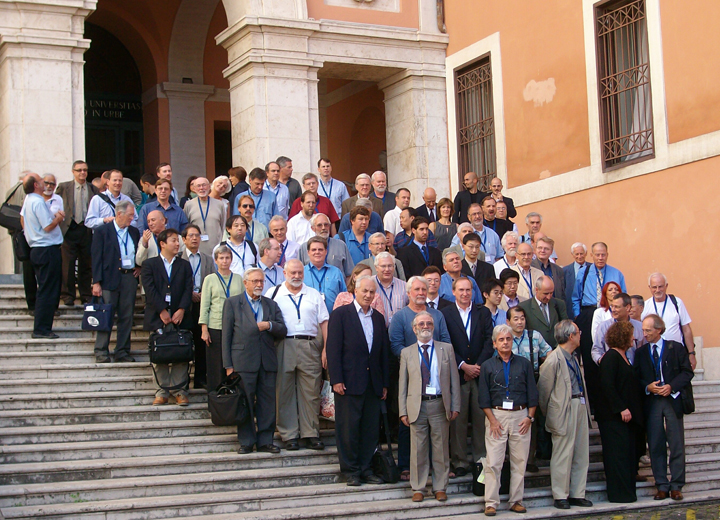
ICCF-15 Group Photo
(Photo: W. Collis)
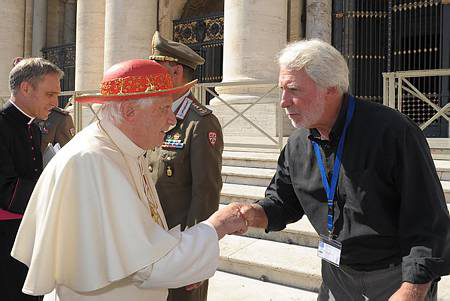
Michael McKubre Meets Pope Benedict XVI
(Photo: Vatican Photo Services)
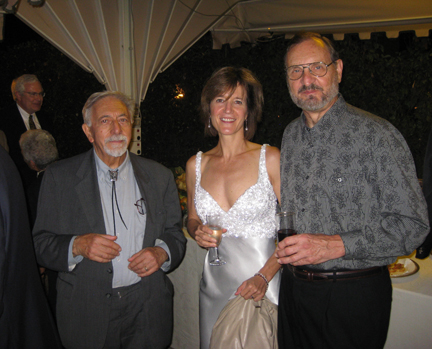
Researcher Francesco Scaramuzzi, "Cold Fusion" Historian Marianne Macy, Michael Melich
(Photo: D. Nagel)
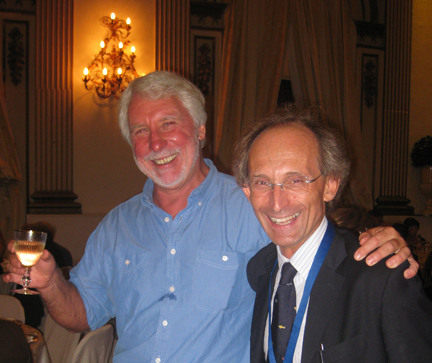
Michael McKubre and Vittorio Violante
(Photo: D. Nagel)
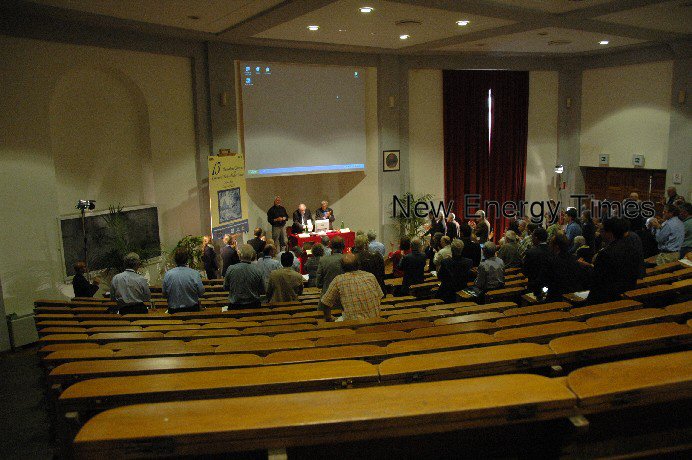
Martin Fleischmann Receives Standing Ovation from ICCF-15 Audience
(Photo: S.B. Krivit)
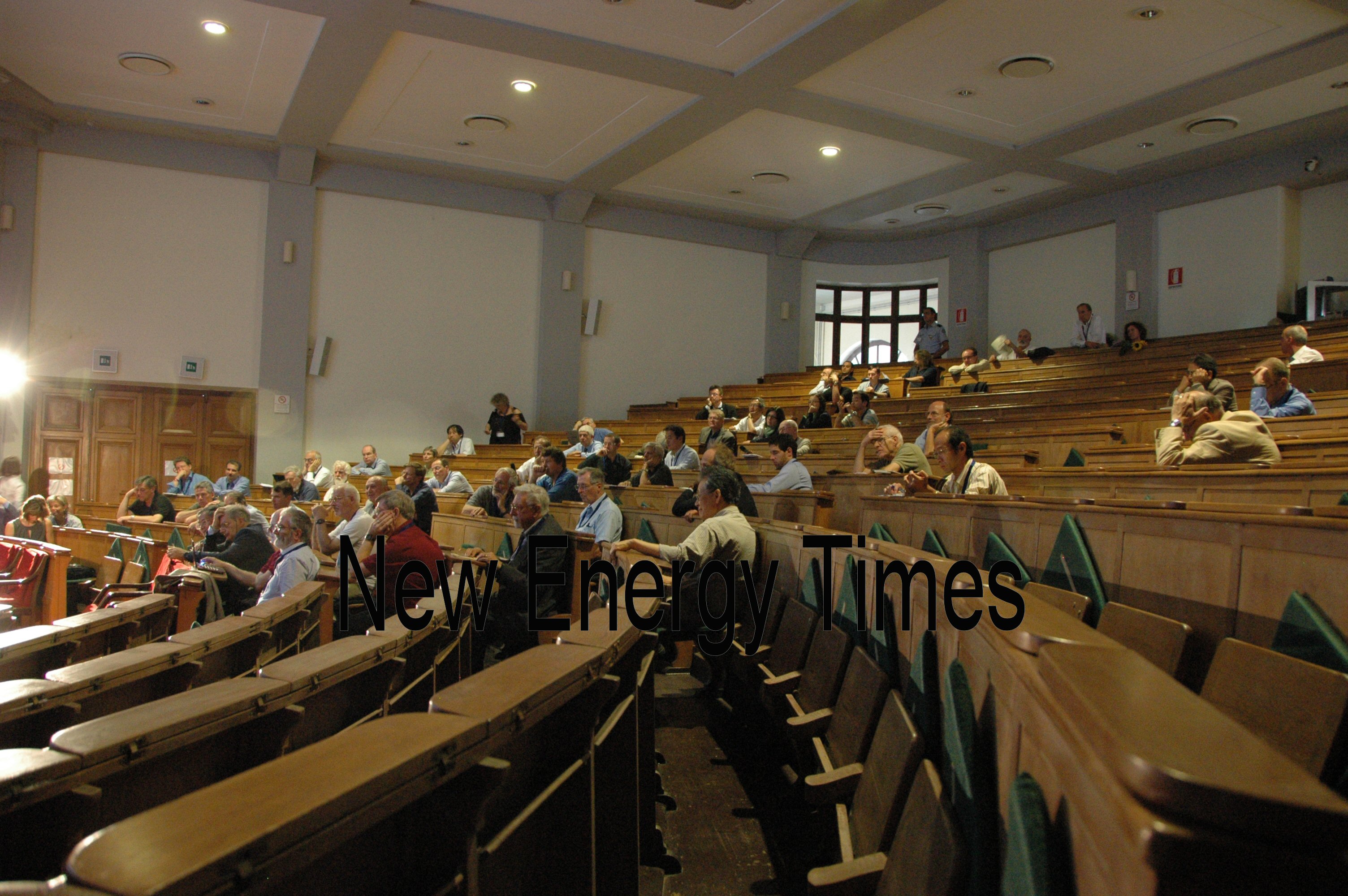
ICCF-15 Audience
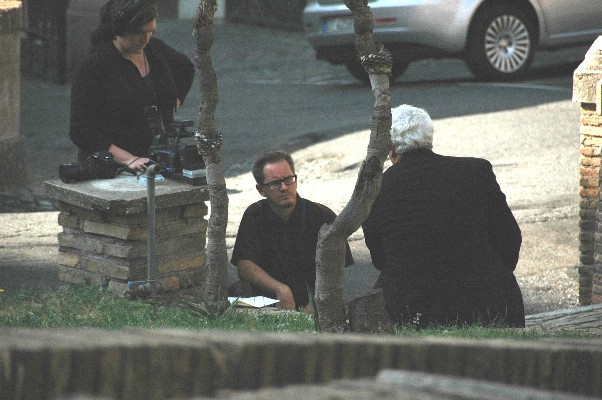
Monica Ross and Clayton Brown of 137 Films Interview Rob Duncan of University of Missouri During Filming of "The Experiment"
References
1. Kitamura, Akira, Nohmi, Takayoshi, Sasaki, Yu, Takahashi, Akito, Seto, Reiko, and Fujita, Yushi, "Anomalous Effects in Charging of Pd Powders With High Density Hydrogen Isotopes,” Physics Letters A, 373 (35) (August 24, 2009), pp. 3109-3112.
2. Takahashi, Akito, "Opening Possibility of Deuteron-Catalyzed Cascade Fusion Channel in PdD under D2O Electrolysis," J. Nucl. Sci. Technol., 26 (1989), p. 558.
⇐ Previous Article — Table of Contents — Next Article ⇒ | 
